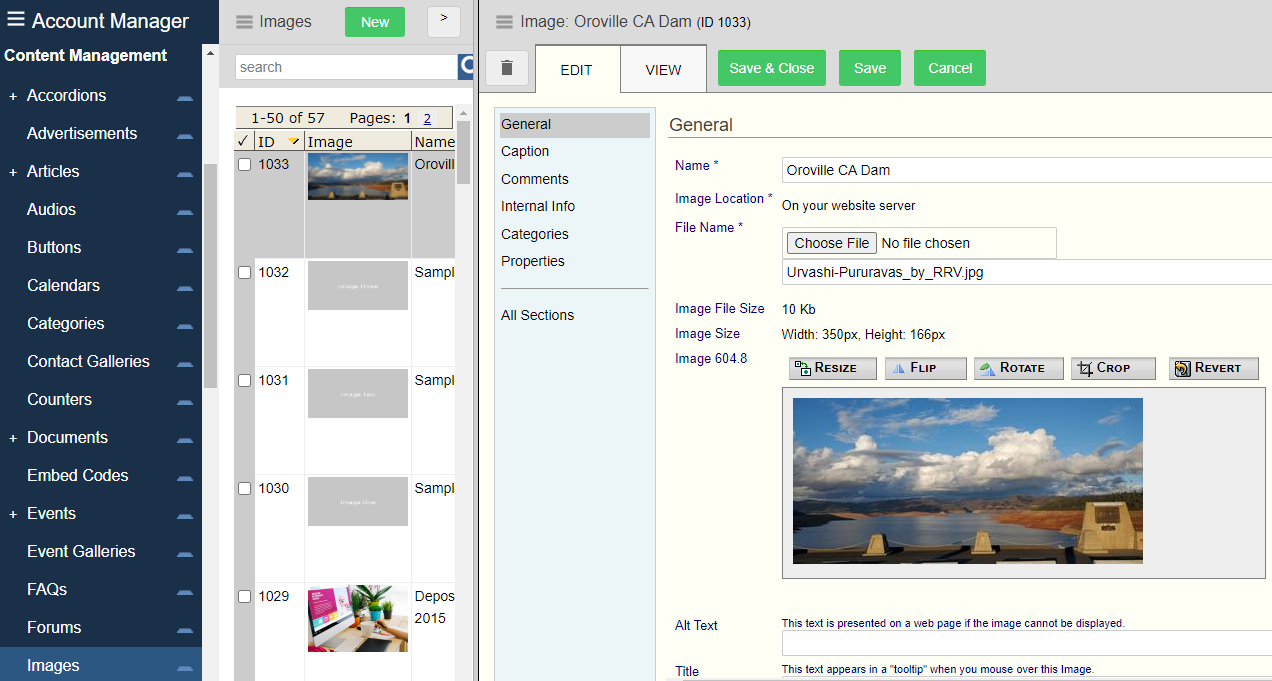© 2022 Full Partner, Inc.
Full Partner Help Center
Course: 01-1 Content Management Objects
|
|
Images |
ImagesLocation: Web Content/Images Overview: Web Content/Images is where we store all the images you upload to your database. We use images in many ways throughout the system. You can add images to your articles, course modules, events, emails, and product descriptions, as well as using them for a featured image thumbnail in a variety of presentation modes. We also use them in slideshows and image galleries. Any image you use, no matter where you use it in the system, will first be uploaded to the Images database. See below for steps on how to add an image to your images database.
Steps to add an image to your images database:
Related Topics
Visit the Course Content page for a linked index of the Content Management Objects. |
